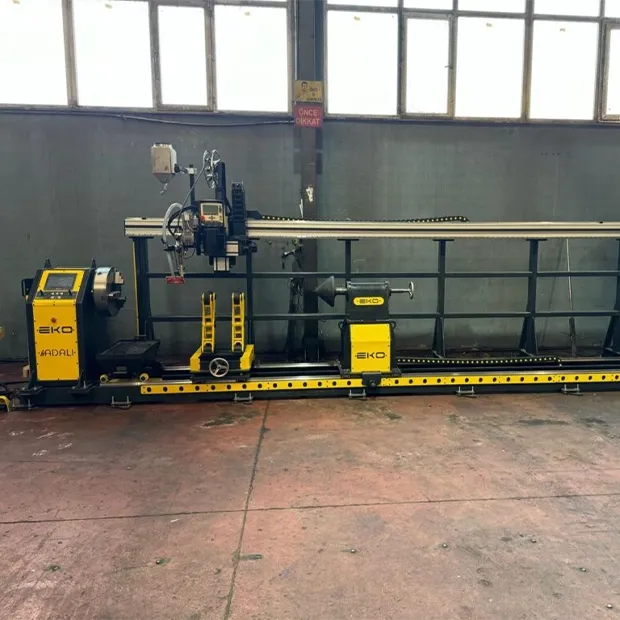Circular Welding Automation
Circular welding automation is used to standardize the welding processes of cylindrical or ring-shaped metal parts. This system rotates the workpiece at a constant speed, allowing the welding torch to create a consistent seam line.
Circular welding automation is a solution that increases efficiency, especially in industrial facilities engaged in mass production. Welding parameters are managed through a control panel, and each part is completed with the same quality. The system can be easily adapted to parts of different diameters and thicknesses, contributing to the creation of flexible and sustainable production processes.
Some technical advantages of choosing this automation include:
What is Circular Welding Automation?
Welding solutions developed to increase efficiency in industry and minimize human error are increasingly shifting toward automated systems. At this point, circular welding automation provides high precision and repeatability in welding processes for cylindrical or ring-shaped parts. The system is based on rotary tables and control modules that provide synchronized movement.
Circular welding applications are generally used on round-surfaced parts such as pipes, tanks, flanges, or drums. Thanks to the speed and control advantages offered by automation, production times are shortened, and error rates are noticeably reduced. Moreover, consistent maintenance of welding quality positively impacts costs.
Circular welding automation stands out particularly in the following situations:

One of the greatest advantages of circular welding processes is minimizing operator intervention. These systems improve workplace safety while reducing welding errors and easing quality control processes. When standardization is achieved on the production line, each weld seam can be reproduced with the same quality.
Circular welding automation is an advanced production technique offering high precision, low error rates, and time savings. It is a powerful technological solution for both small workshops and large-scale manufacturing facilities.
What Are the Benefits of Circular Welding Automation?
In industrial manufacturing processes, speed, quality, and consistency are always prioritized. For this reason, manufacturers prefer circular welding automation especially when joining round-shaped parts. This system allows the workpiece to rotate around its axis while the torch remains stationary. As a result, a circular welding path is achieved.
This automation technique eliminates operator-dependent variables, ensuring uniform quality in every part. Since the margin of error is minimized, the need for post-weld corrections or rework is significantly reduced. By saving both time and labor, this system helps optimize production costs.
This system not only increases quality but also ensures traceability of processes. Thanks to automatic control panels, welding parameters can be easily monitored and adjusted if necessary. Thus, stability is maintained throughout the production process, and each workpiece is completed according to the same standards.
When high thermal balance is required on the part to be welded, circular motion directly supports this advantage. Especially in hollow cylindrical materials or pipe lines, rotary movement plays a critical role in achieving uniform weld seams. The system’s ability to be precisely adjusted allows it to deliver the same success with metals of different thicknesses and structures.
Additionally, such automation solutions reduce operator fatigue and workplace accidents, creating a safer working environment. Widely used across various industries, this technology is preferred due to its suitability for mass production and high-quality results. In conclusion, circular welding automation is a strategic investment that boosts production efficiency and strengthens competitive advantage.

For more detailed information about our circular welding automation solutions, you can contact Eko Kaynak immediately.

